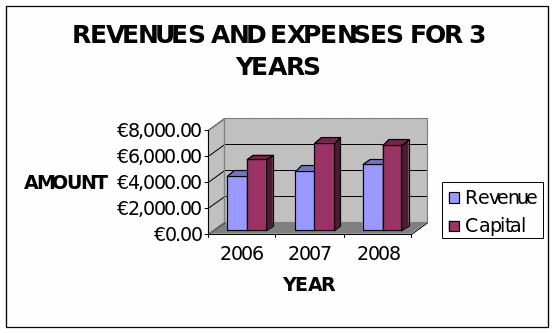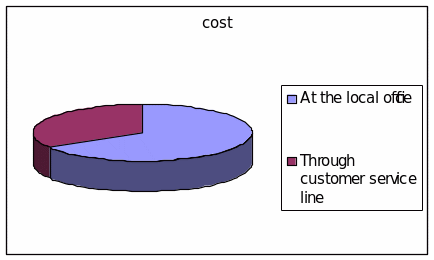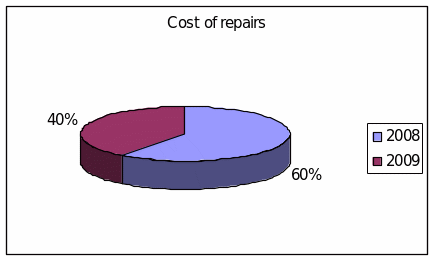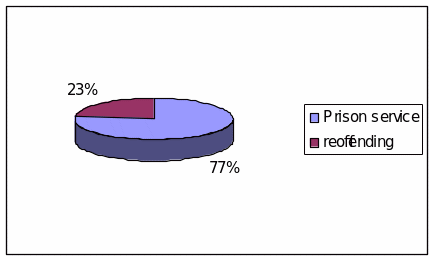Introduction
The quality of service delivery in any public service institution is determined by the effectiveness of its internal structures. One of the structures used in the monitoring and evaluation of public accounts is the audit procedure. The main role of an audit procedure is to assess, evaluate and monitor the systems in a public service institution (Moeller, 2007).
Generally, any accounting department in a public institution has to have an audit committee. The committee is normally an independent body comprising of non executive members of the public institution. The committee is mandated to oversee the overall audit programs. In some cases, the committee is tasked to review the internal audit process (Roberge, 2011).
It may involve testing the internal controls for their accuracy and effectiveness. It may also perform operational audits on the overall operational systems. This provides information on the integrity of the accounting and the information systems (Menzel & Harvey, 2011). The audit committee is mandated to perform financial audits. Another important structure is the use of audit programs.
They engage the use of tools which portray the correct financial position of the institution. The audit programs advocate for compliance of laws and regulation of the land. The purpose of this study is to evaluate how the adoption of structural audit procedures affects the service delivery of public service institutions.
The study will also take into account several reforms in the audit procedures in public institutions and their effects (Smith & Licari 2011). The general objective is to understand the specific outcomes realized when audit procedures are implemented in the management of public institutions.
This study performs a comparative assessment of the management of two local authorities which are the Irish Local Authority and The Scottish Local Authority. A look at the Irish Local Authority, Scottish Local Authority and their service delivery systems will form the basis upon which we shall evaluate the significance of adopting audit procedures.
Irish Local Authority
In 2006, the Irish government adopted major reforms in the financial system of its local authority. The reforms were defined as per the accounting codes of practice and guidelines (White & Guy, 1994). Section 107 of the local government act and the local government regulation of 2000 on financial procedures and audit offered guidelines on the reforms (Alan 1994).
The two acts addressed the objective of the audit, the role of the auditor including his powers and the audit output. The acts included the role of public in relation to accountability of local authorities (Dumville, 2001).The principles of public audit in the United Kingdom stipulated that a public service institution could only be audited by an independent body (Moody, 2005).
This principle led to the development of an independent body, the Local Government Audit Service (LGAS). The body was mandated to develop policies that would be adhered to in the management of local government funds. It was accorded the authority to formulate guidelines and procedures that ensured transparency on the management of local authorities.
The Local Government Audit Service was tasked with the responsibility of employing appropriate measures that ensured accountability of all local authorities. It comprised of the following members.
The Local Government Audit Service was mandated to undertake audit procedures in 184 bodies of the Irish Local Authorities as illustrated in the following table.
The local government Audit Service scrutinized the financial transactions of every local authority department in the public service sector with the aim of looking at the legality of each transaction (Jeong & Nor, 2007). It also addressed issues that related to value of money. Issues that related to governance and transparency of public service bodies created a lot of interest to the general public.
The Irish government has since used the Local Government Audit Service Body to ensure that the public is well informed. This includes publishing of financial audited reports to the media so that the general public may assess that information. Good governance is normally as a result of employing democratic principles when choosing leaders.
It is the role of Local Government Audit Service to implement and advocate for democratic elections of local government representatives. With the implementation and adoption of a Local Government Audit Service, an improvement was recorded on the Local Authorities Revenues and Capital as illustrated below.

A new electronic audit system was implemented in all local authorities in Ireland. The system offered standard formats of audit files. It incorporated risk assessment and management tools that made it easier for local authorities to deal with all forms of risks that would be encountered. With the new system in place, performance of audit tests in various operational activities was simplified.
The system offered guidelines on the appropriate notes for the audit staff. In 2009, the Annual Local Government Conference was held. One of the key resolutions of this conference was the establishment of audit committees. The role of the audit committees was to oversee governance agendas in local governments.
The audit committee comprised of five members who were the chairperson, two current councilors and two retired councilors. The conference also addressed business plan formulation in local governments. The idea here was to help local governments to be self sufficient and self sustaining.
The effects of audit procedures reforms in Ireland
After the 2008/2009 audit, the following issues came up that required to be referred to the local authority for further action.
Inefficiency of water charges was of major concern. A number of factors may have contributed to poor collection of water charges. Water meter timings were found to be inefficient. Disputes in water charges were not well handled and the process was time consuming.
Water billing procedures were inefficient. Poor control measures were not put in place to deal with water fees’ arrears. There were no proper follow up mechanisms on arrears making some consumers accumulate large water charges debts.
Scottish Local Authority
Scotland introduced reforms to the local authorities that are comparable to those in the English government. The reforms were to address the inequalities that existed in the health sector (Khopkar, 2004). The reforms would look into the use of funds in public hospitals. They also addressed consumer protection. They looked at the risks the consumers may have been exposed to. They also looked at food safety.
The standards for processed foods were set. Work and occupational safety measures were addressed. For the Scottish government to achieve high quality public services and ensure their sustainability, rigorous reforms were implemented on capital investment. Schools and social housing expenses were thoroughly audited to assess how much finances were spent and how they would be better managed.
Local governments were thoroughly examined to deduce their financial performance (Denhardt, & Vinzant, 2000). Local authorities encountered challenges in dealing with increased demands on services and in the workforce putting more pressure on the budget. In the reforms, a legislative watchdog body, The Audit Scotland was formed. Its mandate was to ensure that public funds were used efficiently and effectively.
In the year 2007, Scotland passed laws that addressed planning “Effectiveness” and “Efficiency”. The accounts committee was formulated too as part of the audit structures’ reforms. The committee consisted of former local government representatives. The committee was tasked with reviewing all internal and external audits. It employed specific measures that scrutinized the performance of all Scotland’s local authorities.
Benefits of reforms in Scotland
Scotland’s local authorities derived a very creative way of improving performance. They employed the use of cost information. A database was used to store information on input costs, outcome costs, process expenditure and costs of outputs (Barrow, 2005).
Councilors as well as management of local authorities had access to this information. In the year 2010, the Accounts Commission published a report that provided cost checklists in all local authorities. Several case studies demonstrated the effectiveness of the use of cost information to improve local authorities’ performances. The case study was carried out in Lothian.
The aim of the study was to find out how much it cost the local authority to attend a customer at the local office as compared to attending the same customer through customer service telephone lines (Murray, 1968). The study established that it would cost the local authority € 2.23 through the customer service lines.
When the same service was offered through a local office, the cost was €4.34. A policy needed to be enacted to encourage customers to use customer service lines. Through such an encouragement a lot of saving on public funds would be realized.

Another case study was done to demonstrate how critical decisions on spending would lead to a huge saving initiative of public funds. The study was carried out in Dandee City School. The school had a long history of frequent vandalism which strained the council on repairs, replacement and maintenance of vandalized items.
The local authority decided to install new window panels made of poly carbonyl. CCTV cameras were installed at the school. Between 2008 and 2010 vandalism dropped to 18.8% from 38.8%. The cost of repairs dropped from € 280,000 to € 184,000 in 2010.

This created evidence that structured audit procedures improved service delivery in local authorities (Brown, 2001). Scotland had a high number of reoffending criminals. This meant that the same offenders persistently repeated the same crimes leading to frequent re-arrests.
Scottish Prisons Service eventually experienced a surge in its expenditure. A total of € 419 Million was spent on the Prison Service and € 128 was spent on prevention of offenders from committing crimes.

Since then, several reforms have been put in place to address the root cause of reoffending criminals. Criminal justice systems have been improved. The Scottish government has instituted several organizations that scrutinize the performance of local authorities. They include;
- Education Scotland: It looks at all matters that aims at improving education. It offers relevant support to all matters that support education.
- The Care Inspectorate: It addresses the status of people who need care. They include the children and the elderly. Through Care Inspectorate, social workers are deployed to offer care and support required by this category of people.
- The Majesty Inspectorate of Constabulary for Scotland: This body looks at the welfare of the police unit in Scotland. It sets the standards for the police force.
- The Scottish Housing Regulator: Quite a number of people would become homeless in the long run. The housing regulator advocated for the interests of people likely to become homeless (Kettl, & James, 2009).
Detrimental effects of structured audit reforms on service delivery
Some reforms call for the formation of commissions and committees comprising of several members. To some extent, some committees may end up duplicating work that is done by another organization creating some form of redundancy. This can also create some form of conflicts of interest in the bodies involved. It may lead to some form of competition too (Fry, 1989).
The conflicting bodies may end up sabotaging one another. This may translate to a deadlock in provision of service delivery. Other committees may end up not fulfilling the mandate they were called for. This may be due to lack of clear guidelines on their mandate. Sometimes there might not be adequate measures followed in the work of these committees (Paramasivan, & Subramanian, 2009).
Such committees may end up misusing public funds (Jerome & Howard, 1998). Formulation of committees may be time consuming. Others may require amendment of legislative act for them to become operational.
Cases of corruption in local councils in Scotland and Ireland
It is important to note however that some of the members of the financial committees that have been set up in the local authorities have also been implicated with corrupt acts of mismanagement of funds in both Scotland and Ireland.
A case in point involves Glasgow’s City Council versus Mr. Gemmell.In this specific court case, Glasgow’s City Council attempted to evict Mr. Gemmel from his residence in the accusation that he had defaulted on payment of domestic rates something which Mr. Gemmel had not actually done. In Ireland, there was a famous case of corruption that involved Mr.Fred Forsey Jnr, a town councilor.
Mr. Fred was sentenced to serve in prison for fraudulently receiving a huge amount of money from a private developer.Mr.Forsey; according to a report by Transparency International was the first ever public officer of the Irish government to be sentenced to imprisonment for an economic crime. It is important to note that in Ireland and Scotland, there are standards that have been set to contain corruption in public offices.
For example in Ireland, public officers are required to declare wealth to a body called Standards in Public Office Commission (SIPO).SIPO is further mandated to take a supervisory role in accessing information concerning all public officials in Ireland including all activities that are executed by public officials in the interest of the public.
Every public official is required to state his or her wealth and this information is also featured in a website that is accessible to members of the public.
Such measures aimed at checking corrupt practices by members of the local councils of both Ireland and Scotland including legal actions against corrupt officials by members of the councils help in the fight against graft. Audit reforms stipulate what constitute economic crimes and the kind of legal action that should be taken against perpetrators of the said crimes.
The involvement of the public in vetting actions of public officials in Ireland through councils’ websites serves to enhance the integrity of members serving in various accounts committees in the local government.
Public funds have to serve the various councils in a cost effective and efficient manner. It is worthwhile to note that public funds are normally a result of a taxation system and structure mandated by both local and central governments.
Financial challenges that local councils face in Ireland and Scotland
In the face of economic upheavals facing world states, a number of economic challenges have faced governments of Scotland and Ireland. The economic challenges have given rise to unpopular policies by both governments which have led to poor delivery of services and consequent poor performances by local authorities in Scotland and Ireland.
To respond effectively to concerns of better management of public funds in their local councils, both the Irish and Scottish governments have outlined increments in the allocation of public finances to be managed by local councils in key areas of service provision like water services, travel, health and education.
This has not been done by direct transfer of money to the councils but by major tax cuts on the mentioned services that are provided by the local councils in Scotland and Ireland. The Scottish government has attempted to reduce the number of public institutions by merging some of them. Voluntary retirement schemes have also been authorized by the government.
Pay bans or freezes, recruitment bans, reduction of the work force and reduction of pay schemes among other measures have also been undertaken to cut on government spending. Reduction of budgetary allocations has also had its effects in the two countries. The need to reduce money spent on the public by the local councils and at the same time maintain quality services to the public has not been easy.
Some of the challenges faced by the two countries in the face of economic challenges include an increased demand for better public services. There have been problems of economic recession in the two countries. Aging citizens in both countries require specialized attention. The challenge for local governments lies in their capacities to offer services required by the public.
Managers in various public committees in the local councils of Ireland and Scotland have been faced by the increased demand for social services including financial constraints caused by reduced budgets and the need to continue providing efficient services. There have been concerns on increased costs of pension and payment demands by workers.
Many planning departments within the local councils have in the past been faced with the problem of identifying investment options needed. Many local authorities in Scotland and Ireland have not initiated any development projects in years due to lack of funds.
The other challenges that have almost stopped the operations of the local authorities in Scotland and Ireland include increased cost of maintenance of facilities within their jurisdictions. Meeting environmental challenges as demanded by various environmental bodies like the European Union on carbon emissions has also been a problem to the local councils.
Recommendations
Proper use of funds by local councils in both Ireland and Scotland is dependent on how best the local authorities embrace efficient and effective measures of public management practices. The various accounts and audit committees should be composed of public officials who have adequate knowledge and skills in management of public funds.
Public officers who might be appointed to the various financial committees without prior knowledge in financial accounting should be adequately trained. The duty of managing service delivery to the public should not be left to officers who are corrupt and greedy as was evidenced in cases where officers have had to be sentenced to prison because of engaging in fraudulent deals.
Modern technology should be used to enhance transparency in the management of service delivery in various local councils in Ireland and Scotland. Efforts should be enhanced to make sure that local councils in Ireland and Scotland meet the basic services of the public in a cost effective manner.
Conclusion
The comparison between local councils in Ireland and Scotland has revealed the conservative nature in which local councils in both countries have restructured their financial management structures towards safeguarding finances that would have otherwise been used to provide better services to the public. Local authorities in the two countries should focus on creating mechanisms to improve public services.
This can be done through privatization of public services instead of cutting budgetary allocations meant for provision of services to the public. Policies that uphold public interests should be created through the various legal mechanisms in the local authorities in both countries.
Proper audit procedures are therefore necessary in determining the resources needed by local authorities in Scotland and Ireland and also identifying what the local authorities have in excess. This would enhance better planning and consequent improved delivery of public services by the two authorities.
References
Alan J W, 1994,The Irish Constitutional Tradition: Responsible Government and Modern Ireland 1782–1992 ,Irish Academic Press, Dublin.
Barrow, W 2005, Robert Bruce & the Community of the Realm of Scotland (4th ed.). Edinburgh University Press, Edinburgh.
Brown, D 2001 “Kenneth mac Alpin”. In M. Lynch. The Oxford Companion to Scottish History, Oxford University Press, Oxford.
Denhardt, R & Vinzant, D 2000, The New Public Service, Serving Rather than Steering, Public Administration Review 60 (6).Jossey-Bass, New York.
Dumville, D 2001, “St Cathróe of Metz and the Hagiography of Exoticism”. Irish Hagiography: Saints and Scholars, Four Courts Press, Dublin.
Fry, B 1989, Mastering Public Administration; from Max Weber to Dwight Waldo, Chatham, Chatham House Publishers, Inc., New Jersey.
Jeong, C & Nor, F 2007, Principles of Public Administration: An Introduction, Karisma Publications, Kuala Lumpur.
Jerome, B M & Howard, L 1998, Public Administration: Balancing Power and Accountability 2nd Ed, Praeger Publishing, Westport.
Kettl, D & James, F 2009, The Politics of the Administrative Process, CQ Press, Washington D.C.
Khopkar, S M 2004, Environmental Pollution Monitoring and Control, New Age International, New Delhi.
Menzel, D & Harvey, W 2011, The State of Public Administration: Issues, Challenges and Opportunity, M E Sharpe, New York.
Moeller, R 2007, COSO Enterprise Risk Management: Understanding the New Integrated ERM Framework, John Wiley Sons Inc, New Jersey.
Moody, T W 2005, A New History of Ireland: Prehistoric and early Ireland. Oxford University Press, Oxford.
Murray, W H 1968, The Companion Guide to the West Highlands of Scotland. London, Collins.
Paramasivan, C & Subramanian, T 2009, Financial Management, Prentice Hall, Oxford University.
Roberge, E 2011, Whythegovdoesnotwork.com SNAFU, A Hysterical Memoir About Why the Government Doesn’t Work, FL: Createspace, Bureau Publishing, Orlando.
Smith, K & Licari, M J 2011, Public Administration – Power and Politics in the Fourth Branch of Government, Cengage Learning, Connecticut.
White, J & Guy, A 1994, Research in public administration: reflections on theory and practice, John Wiley & Sons, Inc., New Jersey.